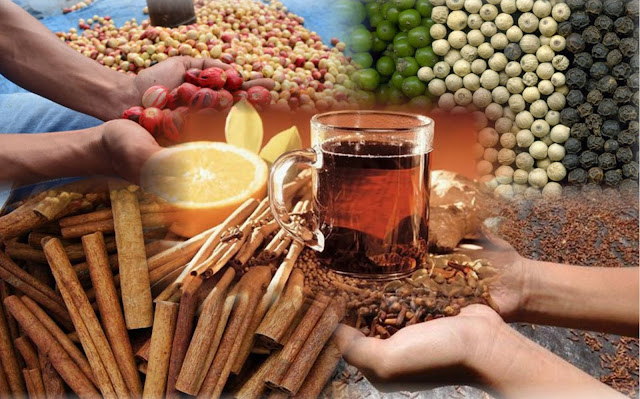What is a medicinal plant?
Medicinal plants are defined as types of plants in which part, all of the plants and / or plant exudates are used as medicines, ingredients, or medicinal ingredients.
Several studies have classified medicinal plants into three groups, namely:
- Traditional medicinal plants are plant species known or believed by the public to have medicinal properties and have been used as raw materials for traditional medicines.
- Modern medicinal plants are plant species scientifically proven to contain compounds or bioactive materials with medicinal properties and their use can be justified medically.
- Potential medicinal plants are plant species suspected of containing or possessing medicinal compounds or biocative substances but their use has not been proven scientifically and medically as medicinal substances.
The Ministry of Health of the Republic of Indonesia defines Indonesian medicinal plants as stated in the Minister of Health Decree No. 149 / SK / Menkes / IV / 1978, namely:
- Plants or parts of plants used as ingredients in traditional medicine or herbal medicine.
- Plants or parts of plants used as starting materials for medicinal raw materials (precursors).
- The extracted plant or plant part and the plant extract is used as medicine.
Indonesian natural medicine can be grouped into three groups, namely herbal medicine which is a traditional herb that has not been tested clinically, herbal medicine, namely natural medicine that has passed the preclinical testing stage, while phyto-pharmacy is a natural medicine that has passed preclinical and clinical trials (SK Kepala BPOM HK.00.05.4.2411 dated 17 May 2004).
Dissemination of information regarding the results of research and tests that have been carried out on natural medicine ingredients should be a concern for all parties because it involves the safety factor of using the drug. Some things that need to be known before using natural medicine are knowing the advantages and disadvantages of traditional medicines and medicinal plants.
What is The advantages of natural medicine?
The advantages of natural medicine include:
- Side effects of traditional medicines are relatively smaller when used correctly and appropriately, including the right dose, time of use, method of use, accuracy in selecting ingredients, and accuracy of selecting traditional medicines or medicinal herbs for certain indications.
- The existence of complementary and / or synergistic effects in medicinal ingredients / bioactive components of medicinal plants. In a traditional medicinal herb generally consists of several types of medicinal plants that have the effect of mutually supporting each other to achieve medicinal effectiveness. The formulation and composition of the ingredients are made as precisely as possible so as not to cause contradictory effects, even if the types of ingredients that are mutually complementary to a desired effect must be selected.
- One plant can have more than one pharmacological effect. The active substances in medicinal plants are generally in the form of secondary metabolites, while one plant can produce several secondary metabolites, thus allowing the plant to have more than one pharmacological effect.
- Traditional medicine is more suitable for metabolic and degenerative diseases. Changes in consumption patterns result in metabolic and physiological disorders in line with the degeneration process. Metabolic diseases include diabetes (diabetes), hyperlipidemia (high cholesterol), uric acid, kidney stones, and hepatitis. While those that include degenerative diseases include rheumatism (inflammation of the joints), asthma (shortness of breath), ulcers (stomach ulcers), haemorrhoids (hemorrhoids) and senility (lost of memory). It takes a long time to treat these diseases, so the use of natural medicine is more appropriate because the side effects are relatively small.
Apart from its advantages, natural medicine also has several weaknesses which are also constraints in the development of traditional medicines, including: weak pharmacological effects, raw materials are not standardized and are hygroscopic and voluminous in nature, have not been carried out clinical trials and are easily contaminated by various microorganisms.
Efforts to develop traditional medicines can be pursued in various ways with certain approaches, so that a form of traditional medicine that has been tested for its efficacy and safety is found, can be scientifically accounted for and meets medical indications, namely the group of phytotherapy drugs or phytopharmaca. To get a phytopharmaca product, you have to go through several stages (pharmacological tests, toxicity and clinical trials) to answer and overcome these weaknesses.
Family medicinal plants (known in Indonesia as toga) are several types of selected medicinal plants grown in the yard of the house or the environment around the house. The medicinal plants chosen are usually medicinal plants that can be used for first aid / mild medicine which are often planted in the yard, including betel, turmeric, ginger, hibiscus, bitter, and others.
Apart from being used as medicine, family medicinal plants also have several benefits, including:
- Can be used as a family nutrition enhancer such as papaya, cucumber, and spinach.
- Can be used as spices or cooking spices such as turmeric, kencur, ginger, lemongrass and bay leaves.
- Can add beauty (aesthetics) because it is planted in the yard of the house such as roses, jasmine, sunflowers, hibiscus, virginia and cat whiskers.
Medicinal plants can be planted in pots or yards around the house. If the arable land is large enough, then some of the crop can be sold to increase family income.
What is the Definition of a Spice Plant?
Spice plants are a type of plant that produces substances that are used to give food a special smell and taste, also used as preservatives / flavoring in cooking. Another definition of spice or "spices" is a plant or part of a plants that is added to food to increase or arouse appetites. Spices are usually distinguished from other plants which are used for almost the same purpose, such as medicinal plants, flavored vegetables, and dried fruit.

